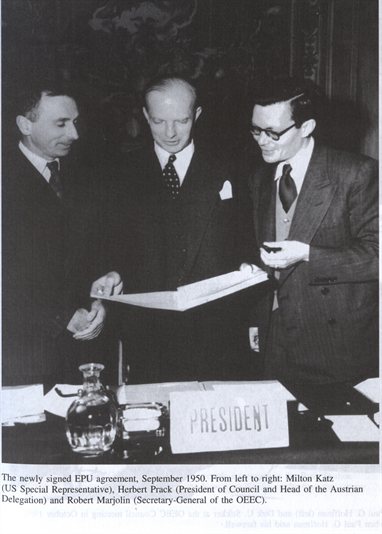Posted on 19 December 2013
A research by Vijay Singh Shekhawat, General Manager at the Reserve Bank of India and doctoral candidate in International Economics at the Indian Institute of Technology in Mumbai, at the Historical Archives of the European Union in Florence takes a deeper look at the root causes of the economic crisis since 2008.
Global imbalances in the balance of payments are the perceived root cause of economic crises that the world has been facing since 2008. These imbalances, however, are a consequence of multiple factors including skewed patterns of global savings and investments, persistent deficits in Balance of Payments, depressed interest rates over a prolonged period, excessive elasticity of the international financial system and failure to restrain the asset price boom. A policy remedy recommended for correcting these imbalances is adjustments to reserve policy so as to induce the nations, which are hoarding foreign exchange reserves as personal insurance against a Balance-of-Payment crises, to forgo the built up.

Even prior to the current crises, the supranational central bank model and the International Clearing Union model proposed by Keynes in the 1940s was envisaged to accommodate and promote two types of adjustment processes, namely expenditure reduction (e.g. fiscal restraint, monetary contraction) and expenditure switching, with the eventual objective of limiting the foreign exchange reserves needed for settlement. Such clearing unions provide an institutional framework for flow of foreign reserve assets between countries based on agreed rules with reduced variation in the high power money as the changes in foreign exchange reserves become limited due to netting and presence of inter-temporal credit.
The earliest idea of forming a clearing union to control imbalances was by Schacht and Funk (1941), who postulated the “New Plan”, where the concept of inter-temporal netting of receivables and payables through an international clearing are mentioned. According to them, once implemented, the New Plan would have allowed Germany to import goods from selected countries against credit, which was to be set-off against exports from Germany to those countries. Pending the set-off, the credits were maintained in special accounts in German banks (Schacht, 1934). Schumacher (1943) presented an operative framework on a multilateral clearing using a three country model. His paper recommended that pooled or multilateral clearing offers a significant advantage over bilateral clearing as its internal mechanism tends to overcome temporary disequilibrium in trade balance among members.
Subsequently, Keynes (1943) in response to the post-war efforts to reconstruct the international monetary system, proposed an International Clearing Union, which predicated on availability of an alternate reserve asset called Bancor and controls over capital account transactions.
Despite European recovery programs, efforts to create multilateral payment arrangements were unsuccessful due to existing strong bilateral ties and the unwillingness of the United Kingdom’s Government to allow sterling to gold parity under the Bretton Woods agreement in 1944. Later on, European countries created the European Payments Union in 1950 under the aegis of the Organisation for European Economic Cooperation with the Bank for International Settlement or “the agent” acting as the settlement agent. The agent was responsible for accounting and operating the European Payment Union transactions apart from management of the funds. There are estimates that members of the Union saved an average of US$ 1.1 billion per annum during the period 1950-58 after which the union ceased to operate.
Driven by the success of the European Payments Union, Triffin’s dilemma encouraged developing countries to set up Clearing Unions: the Central American Clearing House in 1961, the Latin American free trade association payment system in 1965, which was subsequently converted into the Associação Latino-Americana de Integração, the Asian Clearing Union in 1974, the West African Clearing house in 1975, the Caribbean Common Market Multilateral Clearing facility in 1977, the Great lakes Economic Community’s Monetary Arrangement in 1978 and the Central African Clearing house in 1979, which was subsumed into Economic and Monetary Community of Central African States. Of these unions only two, the Asian Clearing union and the West African Clearing House, have remained in operation with clearing operations at their core.
Drawing a parallel between the Keynes model for an international clearing union, the European payment union and the existing unions like the Asian Clearing Union, the research will throw light on the political, economic and banking aspects which lead to the formation of monetary union in Europe and eleven payment and clearing arrangements covering 46% of human population and 54% of exports. Apart from the historical and policy comparatives, the proposed work will use statistical techniques to compute the effect of such unions or arrangements on trade both within and outside the unions and on the composition and volume of settlement assets.
Contact Vijay Singh Shekhawat for more information: [email protected]